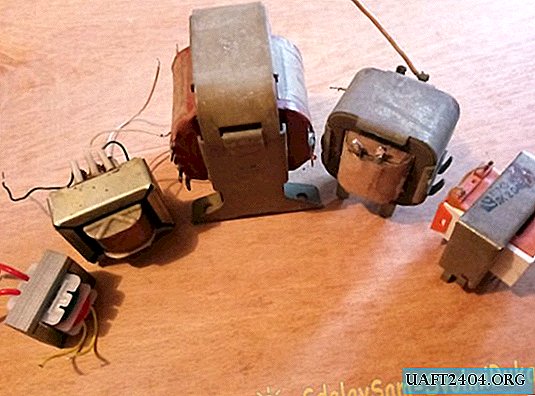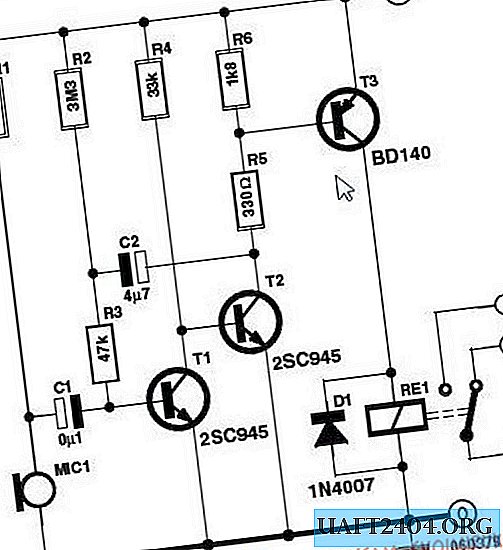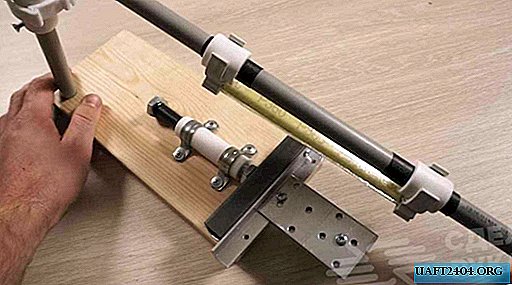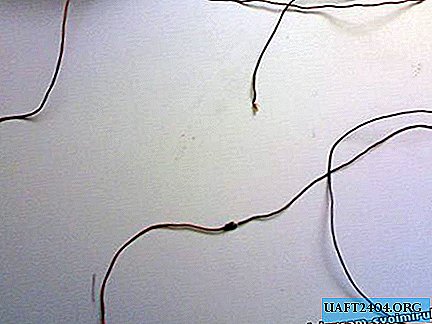Share
Pin
Tweet
Send
Share
Send
However, quite often there is no marking - the inscriptions are erased, destroyed by corrosion, and so on. On many modern products (especially on cheap ones), marking is not provided at all. Throwing away the transformer in such cases, of course, is not worth it. After all, its price in the market can be quite decent.

The most important parameters of power transformers
What you need to know about the transformer in order to correctly and, most importantly, safely use it for your own purposes? Most often, this is the repair of any household appliances or the manufacture of their own crafts, powered by low voltage. And to know about the transformer lying before us, you need the following:
- What conclusions to apply network power (230 volts)?
- What conclusions to remove undervoltage?
- What will it be (12 volts, 24 or others)?
- What power can a transformer produce?
- How not to get confused if there are several windings, and, accordingly, and pairwise conclusions?
All these characteristics are quite feasible to calculate even when there is absolutely no information about the make and model of the power transformer.
To complete the work, you will need the simplest tools and supplies:
- multimeter with ohmmeter and voltmeter functions;
- soldering iron;
- electrical tape or heat shrink tube;
- power plug with wire;
- a pair of ordinary wires;
- incandescent lamp;
- calipers;
- calculator.

Still need some kind of tool for stripping wires and a minimum set for soldering - solder and rosin.
Definition of primary and secondary windings
The primary winding of a step-down transformer is designed to supply mains power. That is, it is necessary to connect 230 volts to it, which are in a regular household outlet. In the simplest versions, the primary winding can have only two outputs. However, there are those in which there are four conclusions, for example. This means that the product is designed to work both from 230 V and from 110 V. We will consider the simpler option.
So, how to determine the conclusions of the primary winding of the transformer? To solve this problem, you will need a multimeter with an ohmmeter function. With it, you need to measure the resistance between all available conclusions. Where it will be the most, there is the primary winding. It is advisable to immediately mark the findings found, for example, with a marker.

You can determine the primary winding in another way. To do this, the wound wire inside the transformer must be clearly visible. In modern versions, this often happens. In older products, the insides may be stained with paint, which precludes the use of the described method. Visually the winding is distinguished, the wire diameter of which is smaller. She is primary. It is necessary to supply network power to it.
It remains to calculate the secondary winding, from which the reduced voltage is removed. Many have already guessed how to do this. Firstly, the resistance of the secondary winding will be much less than that of the primary. Secondly, the diameter of the wire with which it is wound will be larger.

The task is a little complicated if there are several windings at the transformer. Especially this option scares beginners. However, the methodology for their identification is also very simple, and similar to the above. First of all, you need to find the primary winding. Her resistance will be many times greater than that of the rest.
At the end of the topic on transformer windings, it is worth saying a few words about why the resistance of the primary winding is greater than that of the secondary, and with the diameter of the wire, everything is exactly the opposite. This will help beginners to understand the issue in more detail, which is very important when working with high voltage.
A main voltage of 220 V is supplied to the primary winding of the transformer. This means that at a power of, for example, 50 W, a current of about 0.2 A will flow through it (the power is divided by voltage). Accordingly, a large cross-section of the wire is not needed here. This, of course, is a very simplified explanation, but for beginners (and solving the problem posed above) this will be enough.
In the secondary winding currents flow more significant. Take the most common transformer, which produces 12 V. At the same power of 50 W, the current flowing through the secondary winding will be about 4 A. This is already quite significant, because the conductor through which such current will pass should be thicker. Accordingly, the larger the cross section of the wire, the lower its resistance.
Using this theory and the simplest ohmmeter, you can easily calculate where what winding is on the step-down transformer without marking.
Secondary voltage detection
The next step in identifying the "nameless" transformer will be to determine the voltage on its secondary winding. This will determine whether the product is suitable for our purposes. For example, you are assembling a 24 V power supply, and the transformer produces only 12 V. Accordingly, you will have to look for another option.

To determine the voltage that can be removed from the secondary winding, the transformer will have to be supplied with mains power. This is already a rather dangerous operation. By negligence or ignorance, you can get a strong electric shock, burn yourself, damage the wiring in the house or burn the transformer itself. Therefore, it will not be amiss to stock up with several recommendations regarding safety measures.
Firstly, during testing, connect the transformer to the mains through an incandescent lamp. It is connected in series, into the gap of one of the wires going to the plug. The lamp will serve as a fuse in case you do something wrong, or the transformer under investigation is faulty (shorted, burned out, wet, and so on). If it glows, then something went wrong. There is a short circuit in the transformer on the face, because it is better to immediately unplug the plug from the outlet. If the lamp does not light, does not stink or smoke, the work can continue.
Secondly, all connections between the outlets and the plug must be carefully insulated. Do not neglect this recommendation. You won’t even notice how, considering the readings of a multimeter, for example, take on to correct twisted wires, you will get a pretty electric shock. It is dangerous not only for health, but also for life. For insulation, use electrical tape or heat-shrink tubing of the appropriate diameter.
Now the process itself. An ordinary plug with wires is soldered to the terminals of the primary winding. As indicated above, an incandescent lamp is added to the circuit. All connections are isolated. A multimeter is connected to the terminals of the secondary winding in the mode of a voltmeter. Make sure that it is turned on for AC voltage measurement. Beginners often make a mistake here. By setting the knob of the multimeter to measure DC voltage, you will not burn anything, however, you will not receive any sane and useful readings on the display.

Now you can insert the plug into the outlet. If everything is in working condition, the device will show you the low voltage issued by the transformer. Similarly, you can measure the voltage on other windings, if there are several.

Simple ways to calculate power transformer power
With the power of a step-down transformer, things are a little more complicated, but there are still some simple techniques. The most affordable way to determine this characteristic is to measure the diameter of the wire in the secondary winding. To do this, you need a vernier caliper, a calculator, and the information below.
First, the diameter of the wire is measured. For example, take a value of 1.5 mm. Now you need to calculate the cross section of the wire. To do this, half the diameter (radius) must be squared and multiplied by the number pi. For our example, the cross section will be about 1.76 square millimeters.
Next, for the calculation, you will need the generally accepted value of the current density per square millimeter of conductor. For household step-down transformers, this is 2.5 amperes per millimeter square. Accordingly, a current of about 4.3 A can flow through the second winding of our sample “painlessly”
Now we take the previously calculated voltage of the secondary winding, and multiply it by the received current. As a result, we obtain the approximate value of the power of our transformer. At 12 V and 4.3 A, this parameter will be around 50 watts.
The power of the “nameless” transformer can be determined in several more ways, however, they are more complex. Those who wish can find information about them on the Web. Power is recognized by the cross-section of the transformer windows, using calculation programs, as well as by the rated operating temperature.

Conclusion
From the foregoing, we can conclude that the determination of the characteristics of the transformer without marking is a fairly simple task. The main thing is to comply with safety rules and be extremely careful when working with high voltage.
Share
Pin
Tweet
Send
Share
Send











